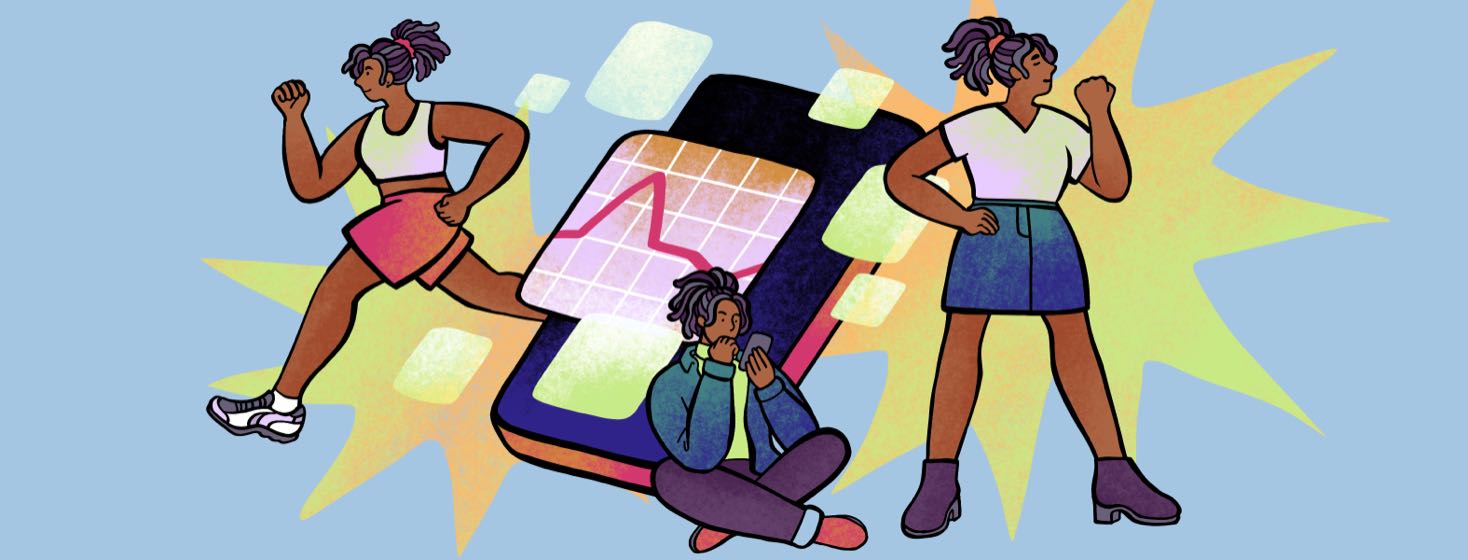How Using a Diabetes App Boosted My Confidence
When I was diagnosed with type 2 diabetes, my A1C was over 13! Over the next 18 months, I managed to bring it down nearly by half. What helped me get there? It was a simple diabetes app.
How I learned to track my diabetes numbers
At my diabetes diagnosis, I was given a glucose meter, metformin, and a basic class on diabetes management. Pretty standard stuff.
But in those early days, I learned one really helpful strategy for learning about how my diabetes works: testing in pairs. And I had a simple logging app to keep track of all my numbers.
Step 1: Testing in pairs
Testing in pairs is checking your glucose levels before doing an activity (like eating a meal or exercising) and checking again afterward. The testing in pairs method will show how your body responds to each activity.
You can answer questions like:
- Do your glucose levels shoot up after oatmeal for breakfast? How about after bacon and eggs?
- What do your glucose levels do after a yoga session? A run? A walk?
Testing in pairs provides a way to learn and track patterns. Over time I could see which meals were and weren't so diabetes-friendly. I could determine that an hour of walking on one day still impacted my glucose levels the next day.
Step 2: Using a simple diabetes tracking app
Using a simple diabetes app to record my glucose readings helped me capture all that data in one place. And the app did the math to show me the changes in my glucose readings. It calculated my daily averages and deviation for my readings. It kept track of if and when I had a hyper- or hypo-blood sugar reading. Once I entered enough data, the app calculated my estimated A1C.
The app also allowed me to record my medications, meals, and exercise. That gave me more data to examine when I tried to make sense of my numbers.
Gaining a better understanding of my body
With this extra info, the app made it easier to understand what was going on when my glucose quickly increased. I could dig deeper to see what I was up to when it happened. Patterns became clear.
Maybe it was time to make that flavored coffee I didn't give a second thought to into a "special treat." Was that short 15-minute walk in the evening "worth it" for impacting my glucose levels?
My simple diabetes app made answering these questions easier. And with these questions answered, I could make informed choices about how to manage my diabetes.
Result: I gained more confidence
As I became more familiar with how my glucose levels responded to my meals and exercise, I also grew more confident in my ability to manage my diabetes.
When my glucose levels went high, I knew what I could do to bring them back down based on what had worked for me before.
When I had a particularly "bad" day or week, I understood how little impact that had on my numbers for the month or quarter.
Knowing these things helped me stay calm and carry on when my diabetes wasn't going the way I wanted. And having all this data at hand let me know when I needed to talk to my healthcare provider about what wasn't working and when I needed to make some changes.
Reflecting on being newly diagnosed
The diabetes app I used when I was diagnosed was simple by today's technology standards. Basically, it was a log on my phone instead of on paper.
It didn't offer any advice or calculate insulin doses. But it did help me learn the mechanics of managing my diabetes. And more importantly, it gave me insight that helped build my confidence in how well I can manage my diabetes. In the dozen years since managing my diabetes using an app, I've kept my A1C in the single digits.
This or That
Do you practice portion control?

Join the conversation